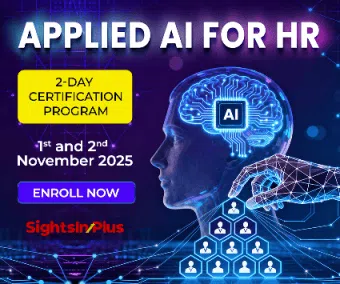Transitioning to the Hybrid Working Model
Pandemic-related lock-downs abruptly pushed the workforce to work from home. Many didn’t have a proper workstation or a place from where they could operate undisturbed. Eighteen months since, it is surprising how effective the arrangement has worked out.
People have reported an increase in productivity, reduction in operating cost, and flexibility to choose one’s work hours. On the other hand, there have been talks about blurring lines between work and family time and burn-out. There is also a realization that remote working has impacted organizational culture, communication, inclusion, sense of belonging, and mentoring.
As the number of pandemic cases are coming down, there is a reevaluation of the work arrangements. Eighteen months of working from home have changed quite a few behaviours and employees have become used to the flexibility offered by the arrangement.
Some have moved back from their dull paying guest accommodations and rejoined their families in smaller towns. Returning to the traditional 9-to-5, 5 days a week work at the office with the associated travel will be resisted particularly in the industries and roles where one can argue that working from home for a select few days is, if not more, equally productive.
Therefore instead of directing employees to return to the office, it will be prudent for the leaders to engage the employees in a conversation on what would be the right long-term model that works for the organisation and employees.
If the workforce is motivated, engaged, and aligned with the organisation’s mission then where they work from can be left to them. The leader’s focus should be on the outcomes to be achieved and the process to achieve it can be worked out by the employees.
Where the team alignment with the organisation is not strong and the motivation is low, the general tendency is to impose close monitoring and supervision. In such cases, leaders are insisting on employees to be back in the office. However, pushing too hard has the risk of emotional disengagement with the organisation and eventually employees walking out of the door and taking up jobs that offer flexibility. The key is to fix the core issue of employee alignment and motivation first before firming up the working model.
The expectation for radical flexibility will continue to prevail and may be critical for a strong employee value proposition. Therefore, hybrid working models will be critical to operationalize. In my opinion, the skill set required to lead the hybrid model remains broadly the same such as accountability, collaboration, cohesive culture, courage, agility, trust, inclusion, and empathy.
However, their proficiency needs to be significantly enhanced particularly amongst the middle management. Also, there is a need for a genuine shift in mindset to champion this transition.
The leadership practices need to be adapted to the new working models. For example, one of the time-tested methods of staying connected with all levels of the organisation is management by wandering about. This gives a sense of how work is happening, how people are thinking, and how they are feeling.
This also allows putting some messages out directly. These interactions are natural, informal, and far more insightful than the 1 on 1 meeting. In a hybrid model where part of the organisation is in the office and part remote at any given time, one needs to find out how one can have their ear on the ground.
Secondly, people who work from the office will have proximity to the leaders and the opportunity to have informal and impromptu conversations. They will have more access to information during the workday. They may develop closer relationships with leaders and may influence decisions.
This can result in inherent disadvantages for people working remotely. Remote workers would be part of more formal video calls and may miss out on the informal chats before and after the call that the people in the office may indulge in. Leaders need to ensure that remote workers are not left out, have equal say and access to information and the communication is consistent across the team.
Also, truth be told, in the past, a lot of managers have gotten away with the lack of planning and discipline since teams were sitting in front of them at all times. Work was being allocated in an ad hoc manner, communication was being done incoherently. Since there was always a line of sight, one could fire right and manage to save the day. However, in a remote working model leaders will need to learn to be more disciplined.
They would have to plan things well in advance and to a greater level of detail, be it work allocation, follow-ups, reviews, or planning for support and mentoring. They would need to have an effective and comprehensive communication plan and use multiple channels so that teams are aligned to the organisation’s mission, have a buy into the execution plan, and know where to go when in need of help.
Transitioning into the hybrid work model is hard work but it can offer great outcomes as well. As Sasha Tuzel, Director, Gartner says, “More employees go above and beyond at work when organizations give them a choice over where, when, and how much they work. But those benefits can only be captured when leadership is willing and able to reimagine how we work and communicate, without sacrificing the company culture and collaboration.”



